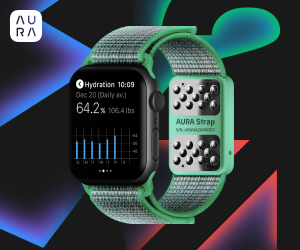BODY COMPOSITION
Body composition and weight are 2 of the many factors that contribute to optimal exercise performance. Taken together, these 2 factors may affect an athlete¹s potential for success within a given sport. Body weight can influence an athlete¹s speed, endurance, and power, whereas body composition can affect an athlete¹s strength, agility, and appearance. Most athletes require a high strength-to-weight ratio to achieve optimal athletic performance, and because body fat adds to weight without adding to strength, low body fat percentages are often emphasized within many sports (25). However, too little body fat results in deterioration of health and performance (22,26). Athletic performance cannot be accurately predicted based solely on body weight and composition (27).
The primary reason for determining an athlete¹s body composition is to obtain information that may be beneficial in improving athletic performance (28). Therefore, the determination of an athlete¹s optimal body weight and composition for health and competition should be done individually, because these factors are strongly influenced by age, sex, genetics, and the requirements of the sport. Yet, some sports dictate that athletes make changes in body weight and composition that may not be optimal for the athlete. For example, weight-class sports‹such as wrestling or lightweight rowing‹may require athletes to lose or gain weight to qualify for a specific weight category. Sports with an aesthetic component‹such as dance, gymnastics, and figure skating‹may pressure athletes to lose weight and body fat to have a lean physique, although their current weight for health and performance may be optimal. With extreme energy restrictions, both muscle and fat mass are lost, which may adversely influence an athlete¹s performance. Thus, an athlete¹s optimal competitive body weight and relative body fatness should be determined when an athlete is healthy and performing at his or her best (29).
Body Composition and Sport Performance
Percentage of body fat values for athletes varies depending on the sex of the athlete and the sport itself. Male athletes with the lowest estimates of body fat (less than 6%) include middle-distance and long-distance runners and bodybuilders, whereas male basketball players, cyclists, gymnasts, sprinters, jumpers, triathletes, and wrestlers average between 6% to 15% body fat (26,30). Male athletes involved in power sports such as football, rugby, and ice and field hockey have slightly more variable body fat levels (6% to 19%). Female athletes with the lowest estimates of body fat (6% to 15%) participate in bodybuilding, cycling, triathlons, and running events; higher fat levels are found in female athletes participating in racquetball, skiing, soccer, swimming, tennis, and volleyball (10% to 20%) (26,30). The estimated minimal level of body fat compatible with health is 5% for males and 12% for females (31); however, optimal body fat percentages for an individual athlete may be much higher than these minimums and should be determined on an individual basis. Athletes who strive to maintain body weight or body fat levels that are inappropriate, or have body-fat percentages below these minimal levels, may be at risk for an eating disorder or other health problems related to poor energy and nutrient intakes (8,11,18,22,23,32-34).
Assessment of Body Composition
Methods for assessment of body composition are based on either a 2-component or a multicomponent model and use several different measurement techniques. Two-component models divide the body into either fat mass (all lipids within the body) or fat-free mass (the remainder after fat is subtracted). The multicomponent model divides the body into 3 or more components. For example, the 3-component model divides the body into fat mass and 2 components of fat-free mass (bone mineral and lean tissue). The criterion methods most commonly used to assess components of body composition in athletes are based on a 2-component or a multicomponent model. Though a multicomponent criterion model is preferred for assessing body composition because it provides more accurate estimates, measurement techniques required for this model are not readily available to most athletes. A 2-component criterion model typically uses hydrodensitometry (hydrostatic weighing) or plethysmography (BODPOD) measurement techniques, and a 3-component model uses dual-energy x-ray absorptiometry (DEXA) measurements. The most common methods used to measure body composition in field or clinical settings include anthropometry (skinfolds), bioelectrical impedance analysis (BIA), and near-infrared interactance. These field methods are validated using either 2-component or multicomponent criterion models (35). When using these field methods, care should be taken in choosing the appropriate validated prediction equation for estimating body composition based on an athlete¹s demographics (age, sex, level of adiposity, ethnicity, and physical activity) in order to obtain accurate estimates (36).
The relative validity of any body composition field method depends on its accuracy compared with the criterion method and its reliability (reproducibility) (31). DEXA and hydrostatic weighing (hydrodensitometry) are 2 widely used criterion methods from which field methods of body composition assessment for athletes are developed (37-42). Regardless of the method used, athletes and coaches should know the errors associated with the body composition assessment method being used. With carefully applied skinfold or BIA methods, it is possible to estimate relative body fat percentage with an error of 3% to 4%, and to estimate fat-free mass within 2.5 to 3.5 kg (27,31,35). Thus, if the actual body fat percentage is 15%, then predicted values could range from 12% to 18% (assuming a 3% error). If the actual fat-free mass is 50 kg, then predicted values could range from 47.5 to 52.5 kg, assuming an error of 2.5 kg. If inappropriate prediction equations for a method are used, poor measurement techniques applied or if the measurement equipment is poorly maintained and calibrated, the errors associated with the body composition estimate will be much larger. Because of the errors associated with body composition assessment methods, it is inappropriate to set a specific body-fat percentage goal for an individual athlete. Instead, a range of target percentage of body-fat values should be recommended.
Next part
BODY COMPOSITION
Body Composition and Sport Performance
Assessment of Body Composition
Methods for assessment of body composition are based on either a 2-component or a multicomponent model and use several different measurement techniques. Two-component models divide the body into either fat mass (all lipids within the body) or fat-free mass (the remainder after fat is subtracted). The multicomponent model divides the body into 3 or more components. For example, the 3-component model divides the body into fat mass and 2 components of fat-free mass (bone mineral and lean tissue). The criterion methods most commonly used to assess components of body composition in athletes are based on a 2-component or a multicomponent model. Though a multicomponent criterion model is preferred for assessing body composition because it provides more accurate estimates, measurement techniques required for this model are not readily available to most athletes. A 2-component criterion model typically uses hydrodensitometry (hydrostatic weighing) or plethysmography (BODPOD) measurement techniques, and a 3-component model uses dual-energy x-ray absorptiometry (DEXA) measurements. The most common methods used to measure body composition in field or clinical settings include anthropometry (skinfolds), bioelectrical impedance analysis (BIA), and near-infrared interactance. These field methods are validated using either 2-component or multicomponent criterion models (35). When using these field methods, care should be taken in choosing the appropriate validated prediction equation for estimating body composition based on an athlete¹s demographics (age, sex, level of adiposity, ethnicity, and physical activity) in order to obtain accurate estimates (36).
The relative validity of any body composition field method depends on its accuracy compared with the criterion method and its reliability (reproducibility) (31). DEXA and hydrostatic weighing (hydrodensitometry) are 2 widely used criterion methods from which field methods of body composition assessment for athletes are developed (37-42). Regardless of the method used, athletes and coaches should know the errors associated with the body composition assessment method being used. With carefully applied skinfold or BIA methods, it is possible to estimate relative body fat percentage with an error of 3% to 4%, and to estimate fat-free mass within 2.5 to 3.5 kg (27,31,35). Thus, if the actual body fat percentage is 15%, then predicted values could range from 12% to 18% (assuming a 3% error). If the actual fat-free mass is 50 kg, then predicted values could range from 47.5 to 52.5 kg, assuming an error of 2.5 kg. If inappropriate prediction equations for a method are used, poor measurement techniques applied or if the measurement equipment is poorly maintained and calibrated, the errors associated with the body composition estimate will be much larger. Because of the errors associated with body composition assessment methods, it is inappropriate to set a specific body-fat percentage goal for an individual athlete. Instead, a range of target percentage of body-fat values should be recommended.












Comments
Post a Comment